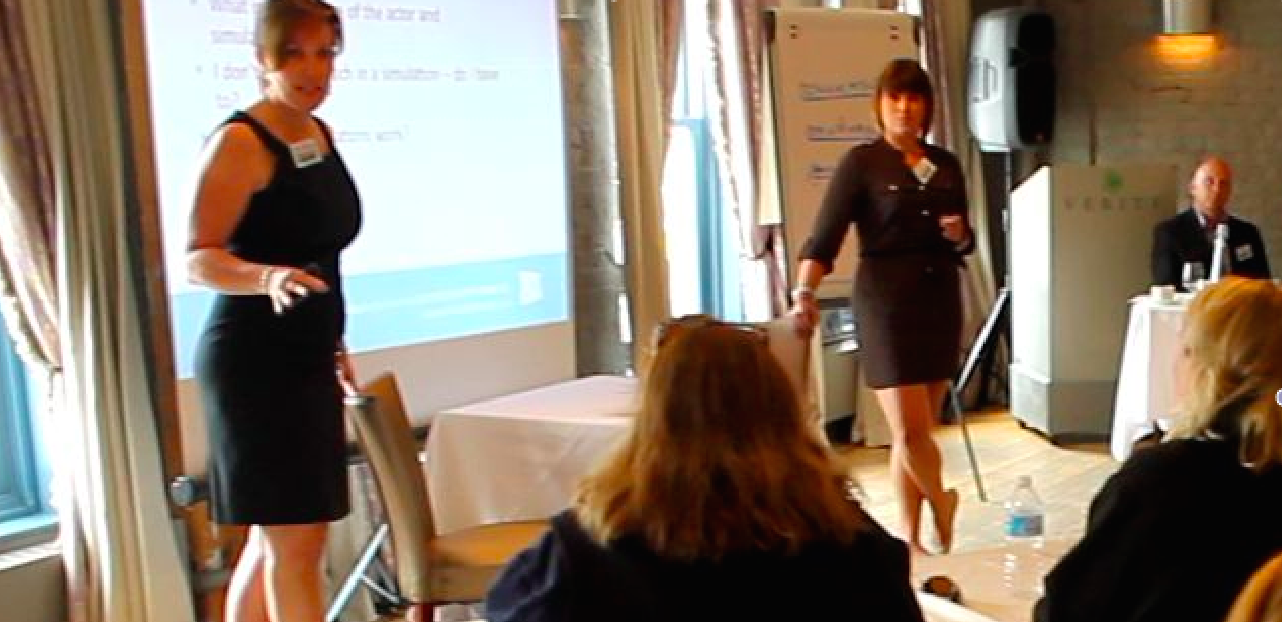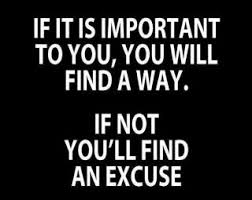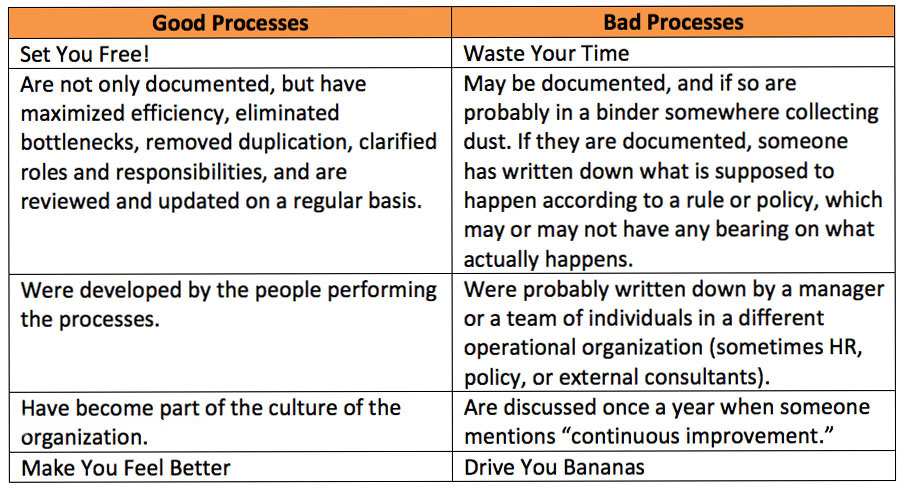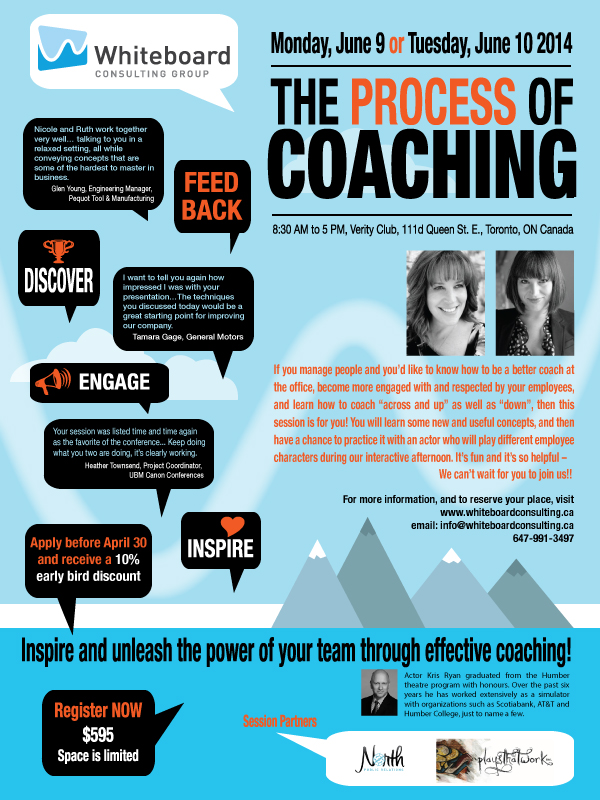This week Nicole and I had the privilege of delivering our first course offered to the public. Both of us are experienced trainers – over the years I have taught courses in the private and public sectors, to international audiences, to conferences-goers and to my team of employees. We keep our training skills current by delivering a variety of management courses to the Ontario Public Service via their Centre for Leadership & Learning, and to our clients.
But this was different.
Our followers know that Whiteboard Consulting celebrated its second birthday last March, and since the very first day we have been excited about offering courses to the general public. It takes time, of course, to build the connections and network of interested people and to determine the subject matter that will garner enough interest to make it worthwhile. So, needless to say, when we finally launched “The Process of Coaching,” we were pretty excited!
In two days we worked with 23 professionals from a variety of industries: telecom, technology, sales, automotive, insurance, healthcare, public service, agriculture, and real estate. So different, yet with such similar concerns! All of them wanted to know how to be better coaches at work – there were different reasons for this, but the goals were essentially the same.
One of the things that made our course unique was our afternoon of coaching simulations, designed to allow each participant to coach an “employee” (in reality, this was an actor well-versed in the subject matter, and able to respond to the individual’s coaching style and provide feedback). This is so valuable to participants, and they love it!
Six Concepts That Created a Flurry of Discussion
- The need for coaching crosses boundaries defined by industry, age, and leadership level. (Everyone needs coaching. Staff level, Manager level, and C-Suite. All industries. All the time.)
- People like to be coached. And once they know how to do it, managers love coaching. (It takes training, and it takes practice.)
- The number one reason organizations do not adopt a coaching culture is that IT’S HARD. (So hard. There is a knack, and it requires confidence and a certain amount of bravery.)
- The number two reason is that people believe it takes too much time. (In fact, once it becomes part of the culture, coaching is just something you do naturally, not something that has to be built into your list of tasks.)
- The ability to coach “across” and “up” in addition to “down” requires a foundation of trust. (And trust is achieved only when you have a mutual sense of integrity, ability to achieve results, and genuine concern.)
- Coaching styles must be adaptable to different generations, thinking styles, cultures, and behaviours. (It is up to the coach to adapt, not the coachee.)
A Rewarding Experience, All Around
Nicole and I almost always feel a sense of great reward when we finish training. Our students seem to identify with our somewhat non-traditional “style”, and the engagement we get energizes us like you wouldn’t believe. These courses were no different – our attendees were fun, interactive, and truly interested in the subject. We had some great conversations around barriers to implementing coaching, the trials and tribulations of passive aggressive behaviour, and how to find out more about an employee’s personal situation without being intrusive or offensive (The answer? Ask permission.)
Our attendees also had a great time and, based on our evaluations, got a lot out of the course. They rated us an average of 4.9 out of 5 on their satisfaction with the course, and 100% of them would recommend it to someone they know. Comments included:
I’m excited to use my newly developed skills – there are opportunities every day in my life.
I’ve never done simulations with an actor. It was awesome and I loved it!
The “lecture and practice” combo is very effective. I especially like that we spent the entire afternoon on practice.
Good tools for all levels of an organization.
It was a very encouraging and welcoming environment for those intimidated by the idea of simulations.
What’s Next?
Well, first I’m going hiking in Spain along the last 200 km of the Camino de Santiago, and Nicole is going to Vegas. After that we will begin planning our next course on “Unraveling the Mysteries of Process Improvement.” We’ll be offering this in September, so stay tuned for more information! We can’t wait…
I’d better start packing. So until next time,
Ruth.













